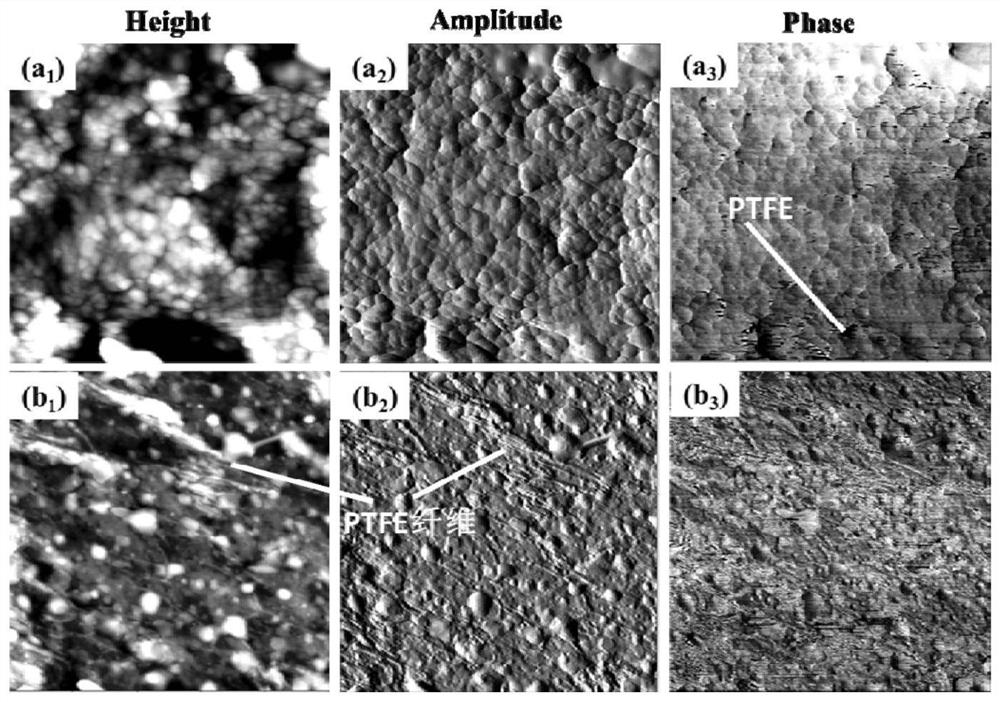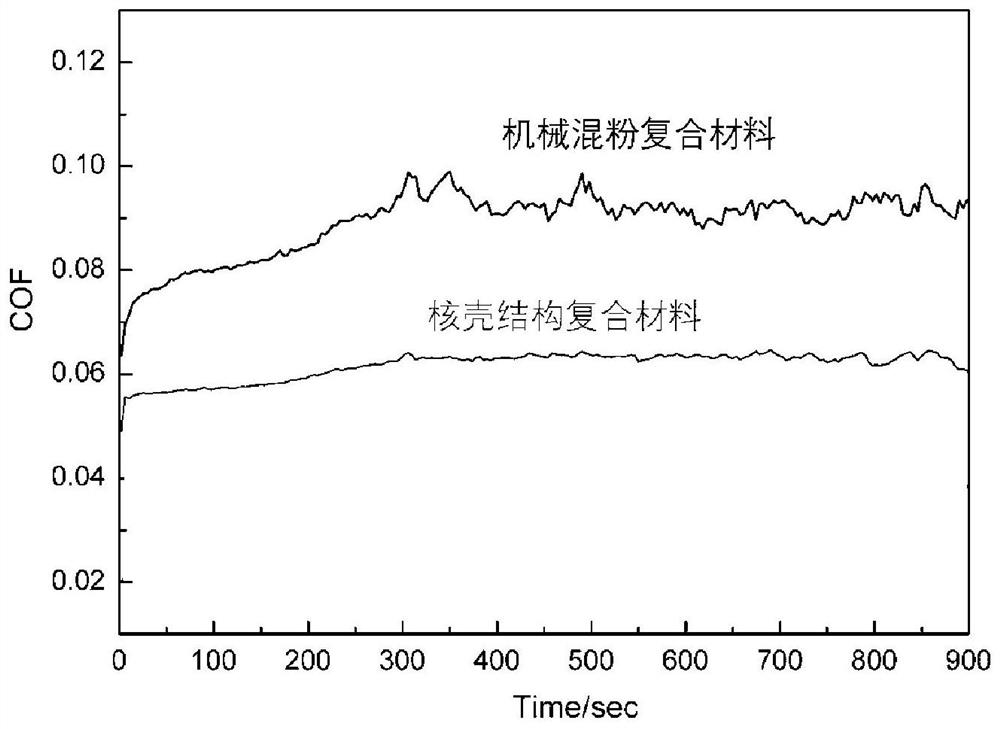Organic-inorganic core-shell structure self-lubricating composite material and preparation method thereof
A composite material, core-shell structure technology, applied in lubricating compositions, petroleum industry, etc., can solve the problems of restricting the use range of composite materials, poor thermal stability, etc.
- Summary
- Abstract
- Description
- Claims
- Application Information
AI Technical Summary
Problems solved by technology
Method used
Image
Examples
Embodiment 1
[0028] (1) Preparation of core-shell structure particles: Add 10mL of concentrated PTFE dispersion (60wt.%) to 100mL of deionized water (PTFE particle size is about 300nm), add 10mL of zirconium butoxide solution, and then dropwise in the mixed solution Add urea solution, ultrasonically disperse for 10 minutes, transfer to a 200mL hydrothermal reactor, react at 110°C for 12 hours, take out the reactor after natural cooling, and obtain PTFE@ZrO through suction filtration, repeated washing and drying. 2 Core-shell structure product. The product was analyzed by TEM, as figure 2 As shown, the product is an obvious core-shell structure, indicating that PTFE is successfully coated. (2) Forming of core-shell composite materials: take a certain amount of dry PTFE@ZrO 2 The powder was molded under a pressure of 20MPa, sintered at 290°C for 5h, annealed at 100°C for 4h, and the organic-inorganic core-shell structure composite material was obtained after natural cooling. The AFM tapp...
Embodiment 2
[0030] (1) Preparation of core-shell structure particles: disperse PTFE powder (5g) with a particle size of about 100nm into 100mL aqueous surfactant system, add 10mL zirconium butoxide and aluminum acetylacetonate solution, and then add Hexamethylenetetramine solution was ultrasonically dispersed for 10 minutes and then transferred to a hydrothermal reactor with a volume of 200mL, reacted at 120°C for 12 hours, took out the reactor after natural cooling, and obtained PTFE@MgO by suction filtration, repeated washing and drying / ZrO 2 Core-shell structure product. (2) Core-shell structure composite material molding: take a certain amount of dry PTFE@MgO / ZrO 2 The powder was molded under a pressure of 30MPa, sintered at 390°C for 2 hours, annealed at 120°C for 2 hours, and the organic-inorganic core-shell structure composite material was obtained after natural cooling.
Embodiment 3
[0032] (1) Preparation of core-shell structure particles: Disperse PTFE powder (3g) with a particle size of about 100nm into 100mL surfactant aqueous solution system, add 5mL tetraethyl orthosilicate, 2mL ammonia water, 5mL ethanol, at room temperature (25 ℃) stirred and reacted for 10 hours, and obtained PTFE@SiO by suction filtration, repeated washing and drying 2 Core-shell structure product. (2) Molding of core-shell structure composite materials: Put the core-shell structure particle powder into a mold made of graphite, and apply a specific sintering power supply and pressing pressure to the sintering powder by using the upper and lower die punches and electrified electrodes to obtain organic and inorganic materials. Core-shell composites. Temperature: 340°C, pressure: 10MPa, time: 5h.
PUM
| Property | Measurement | Unit |
|---|---|---|
| particle diameter | aaaaa | aaaaa |
| particle diameter | aaaaa | aaaaa |
Abstract
Description
Claims
Application Information
 Login to View More
Login to View More - Generate Ideas
- Intellectual Property
- Life Sciences
- Materials
- Tech Scout
- Unparalleled Data Quality
- Higher Quality Content
- 60% Fewer Hallucinations
Browse by: Latest US Patents, China's latest patents, Technical Efficacy Thesaurus, Application Domain, Technology Topic, Popular Technical Reports.
© 2025 PatSnap. All rights reserved.Legal|Privacy policy|Modern Slavery Act Transparency Statement|Sitemap|About US| Contact US: help@patsnap.com



